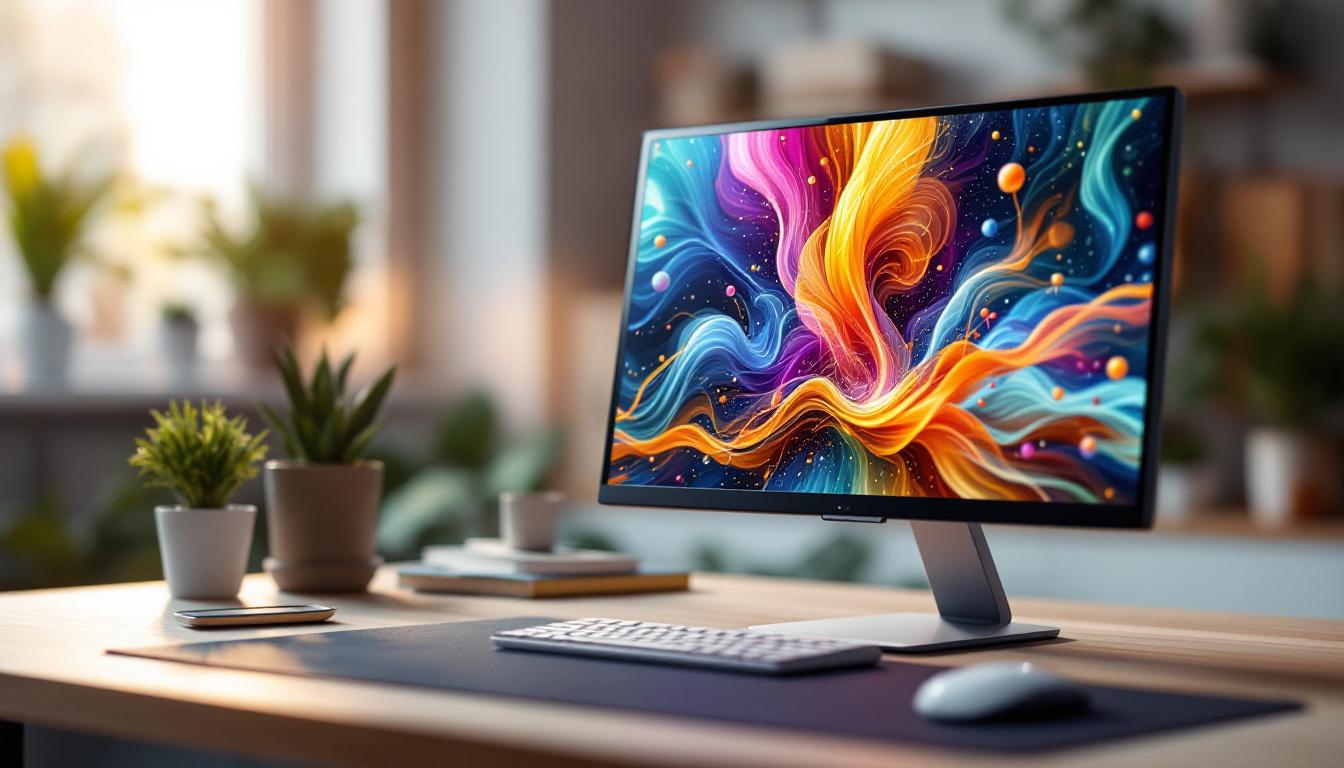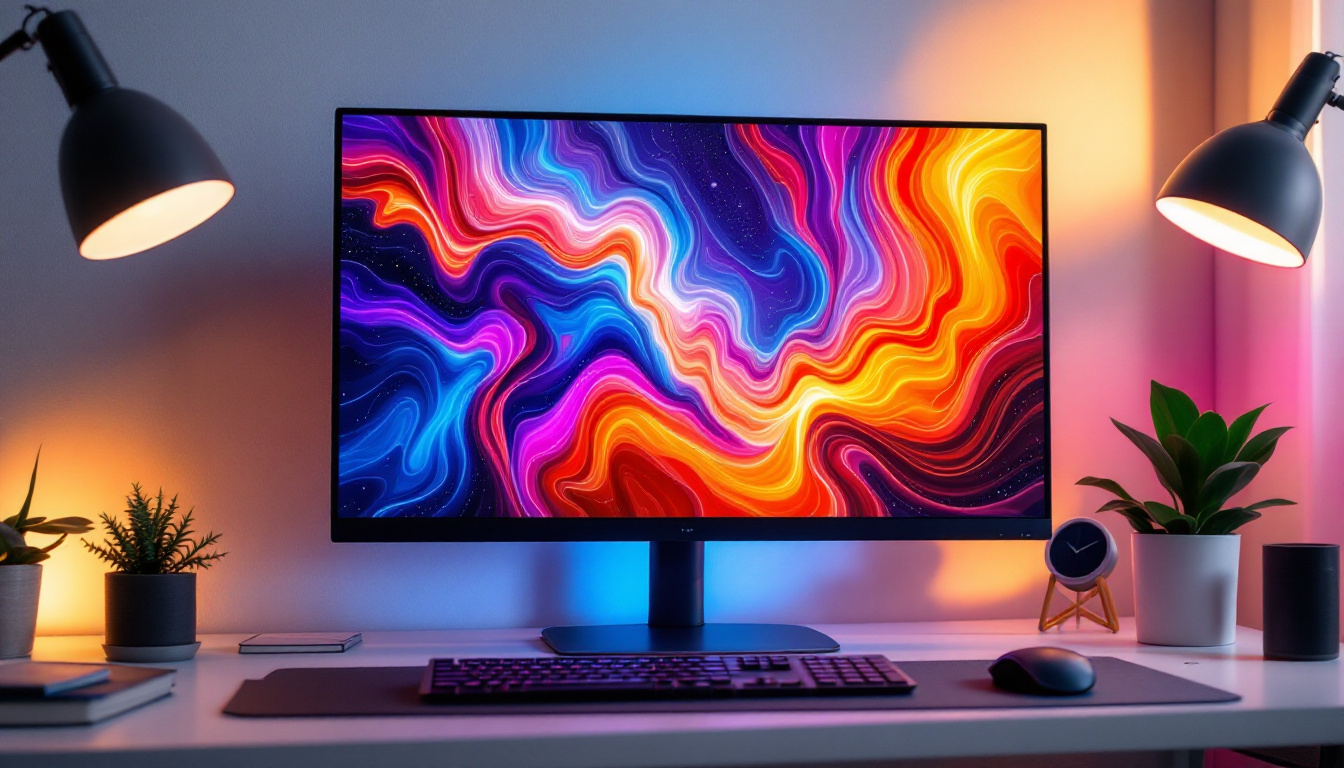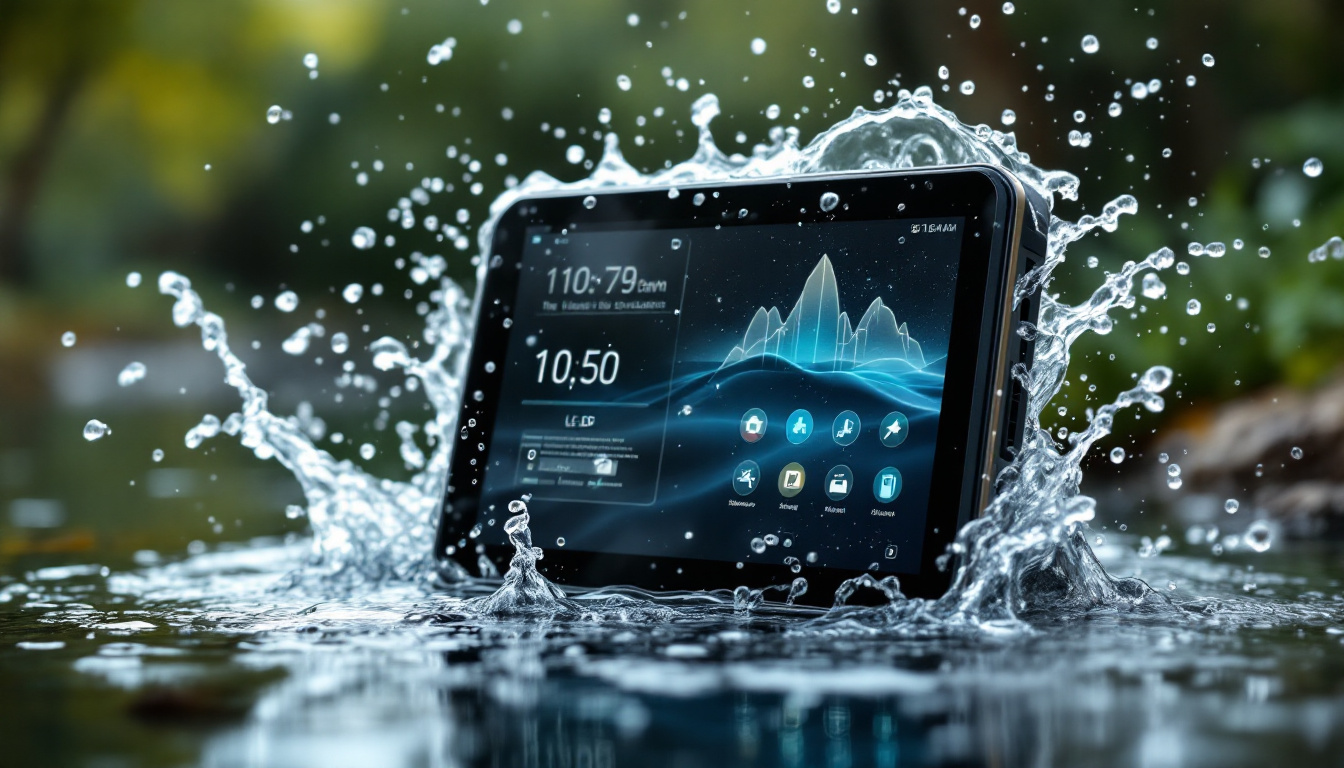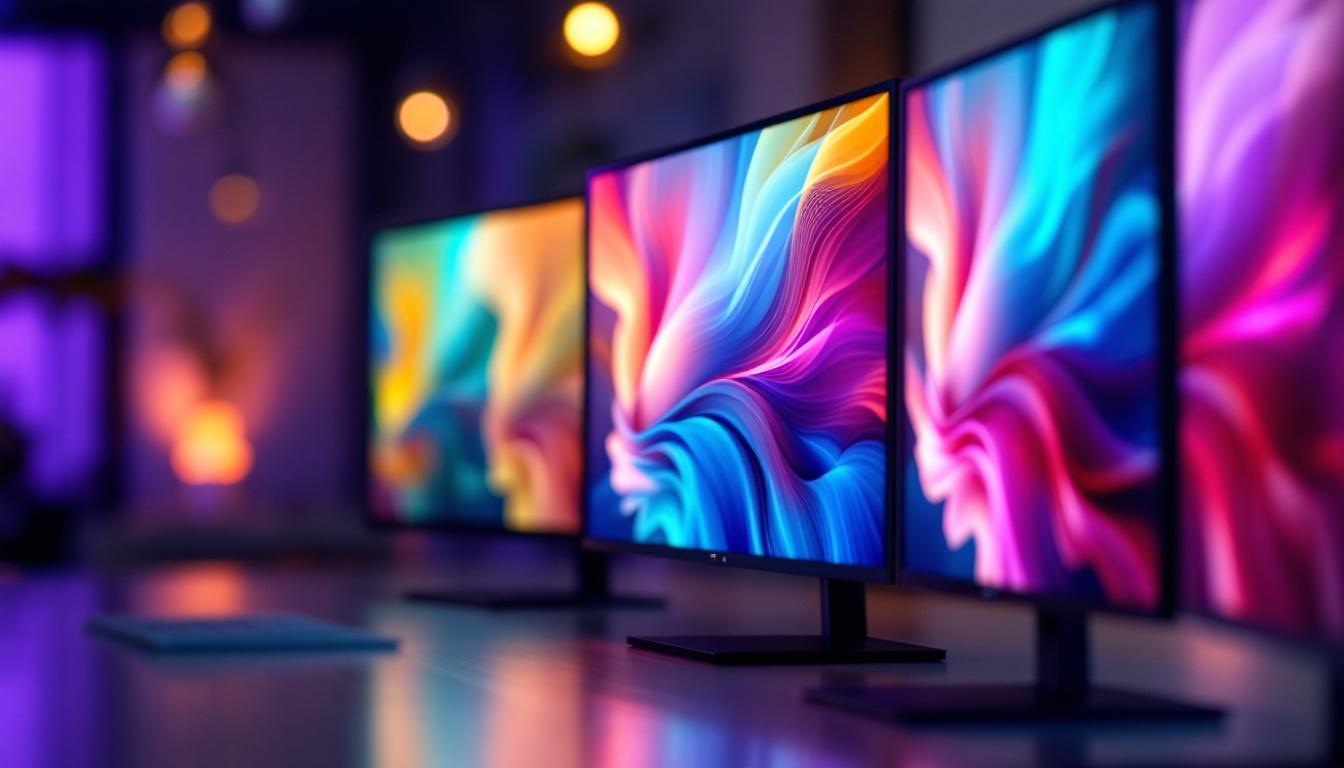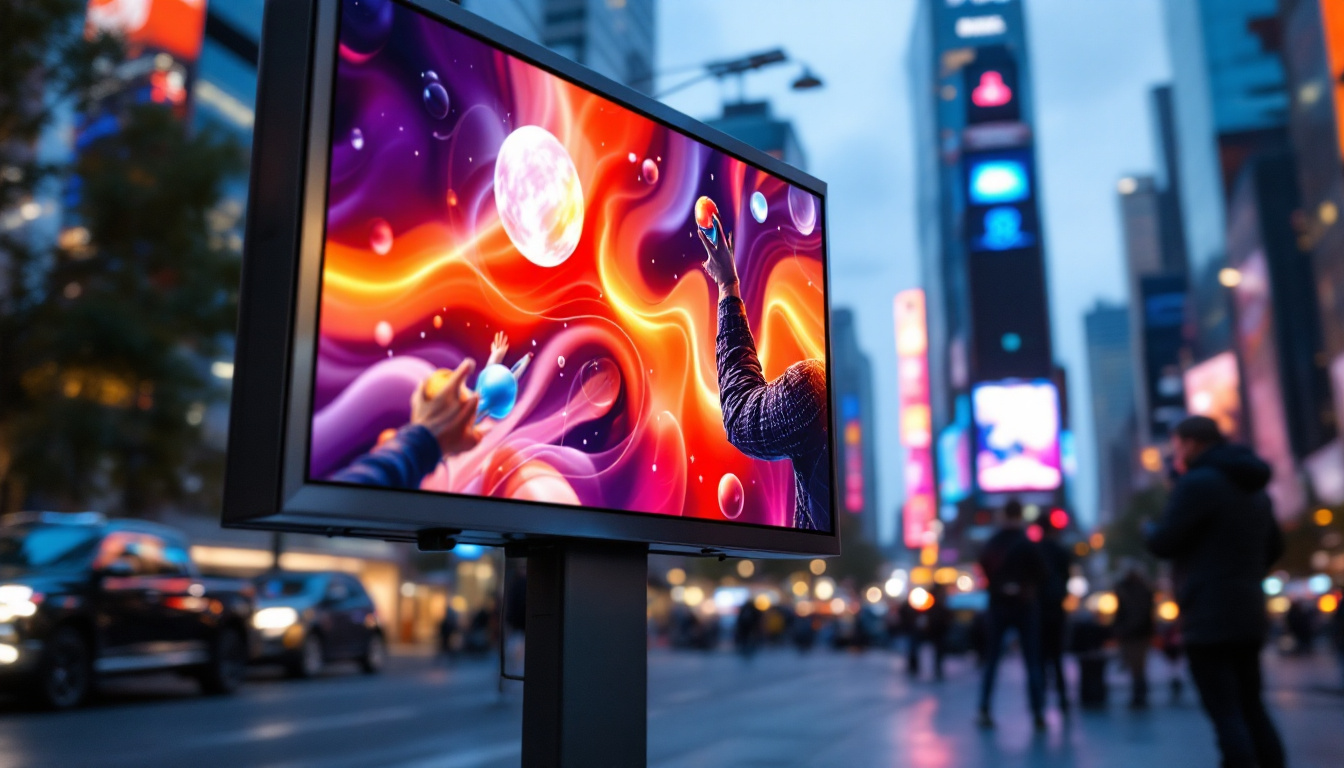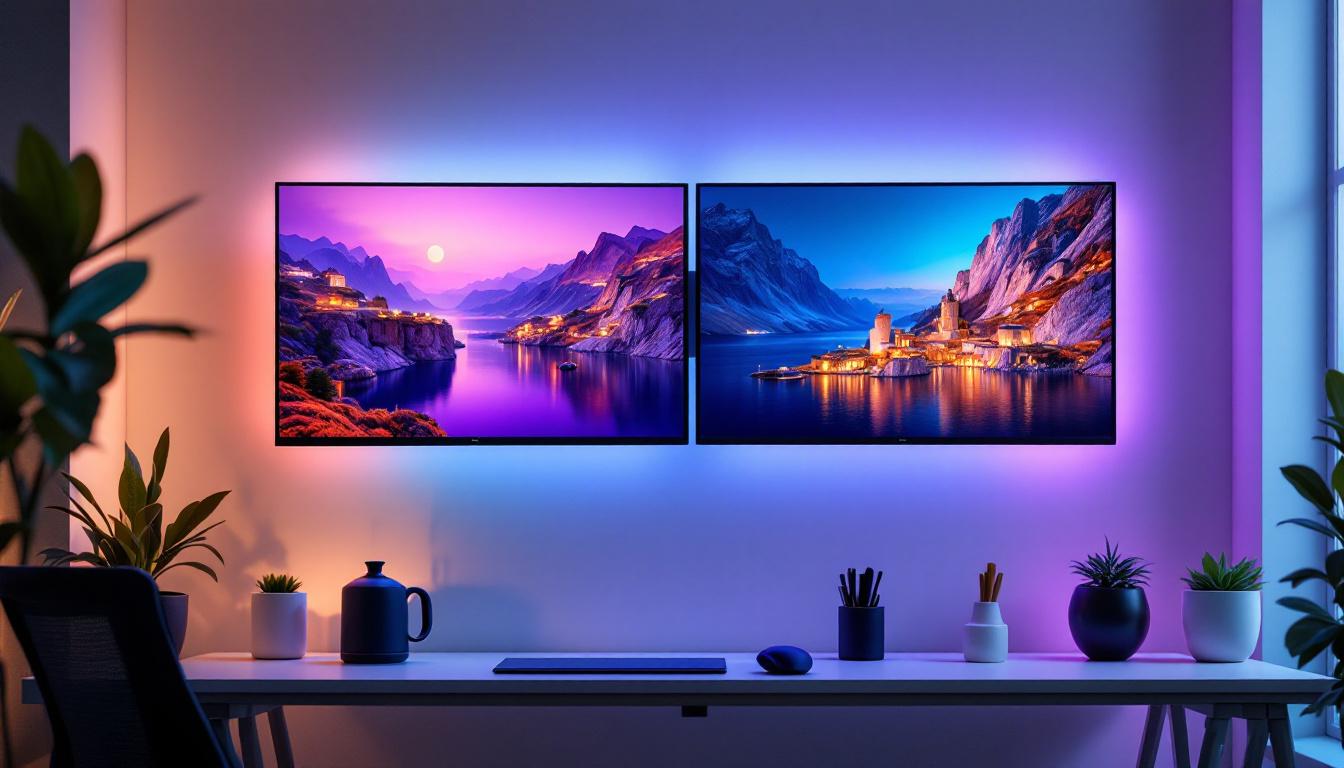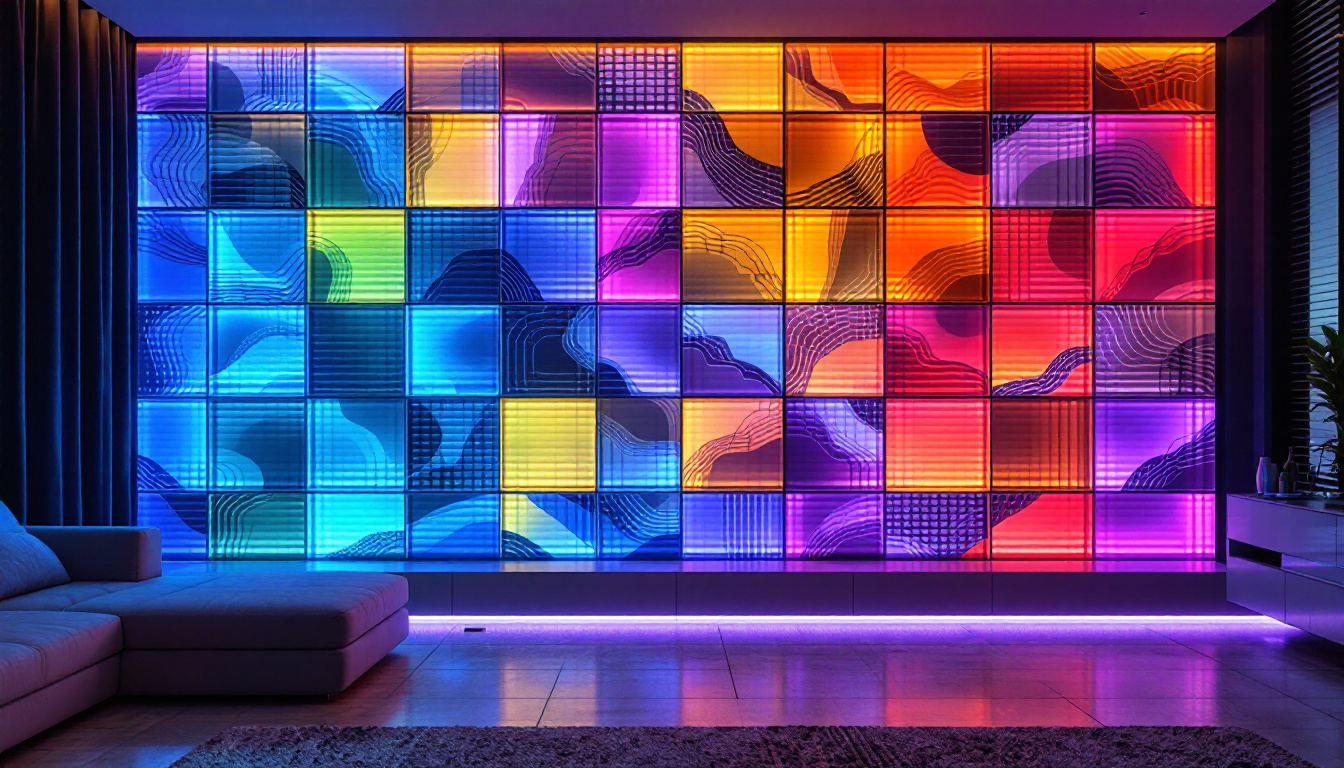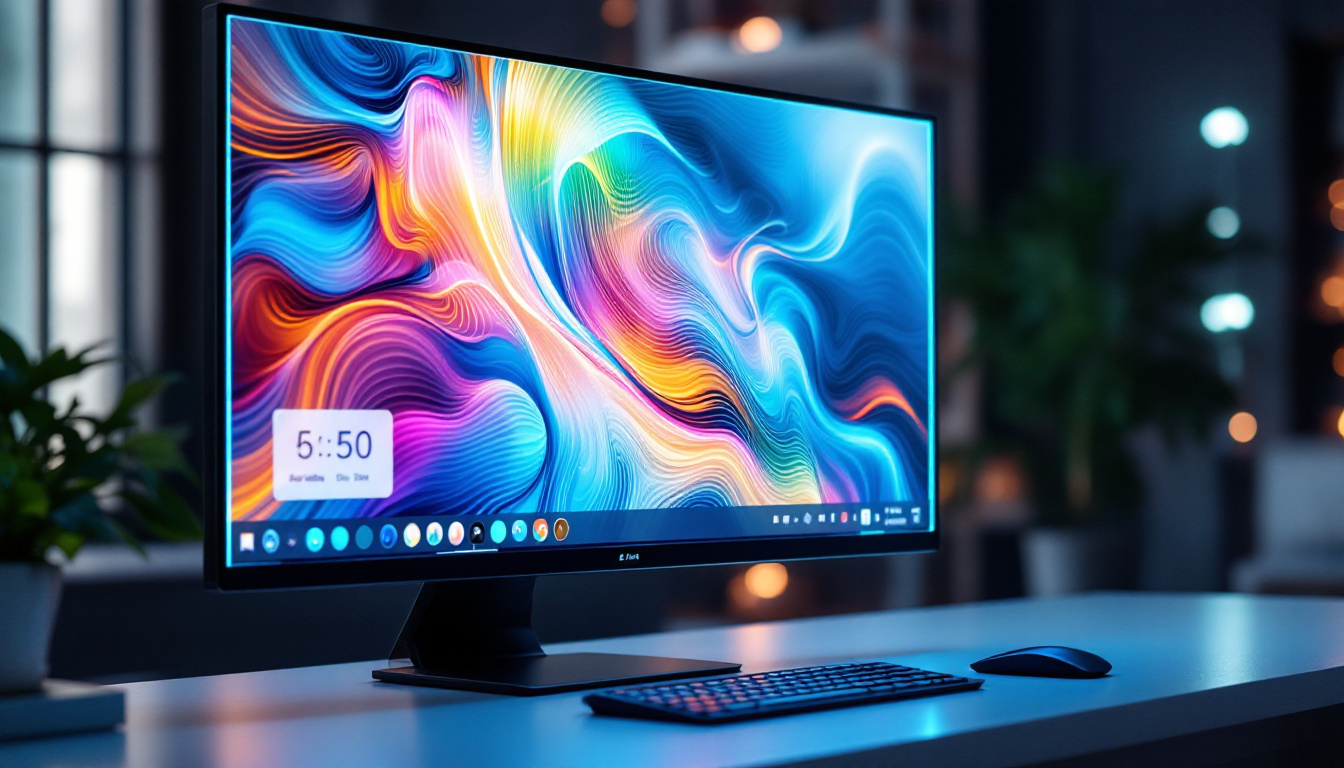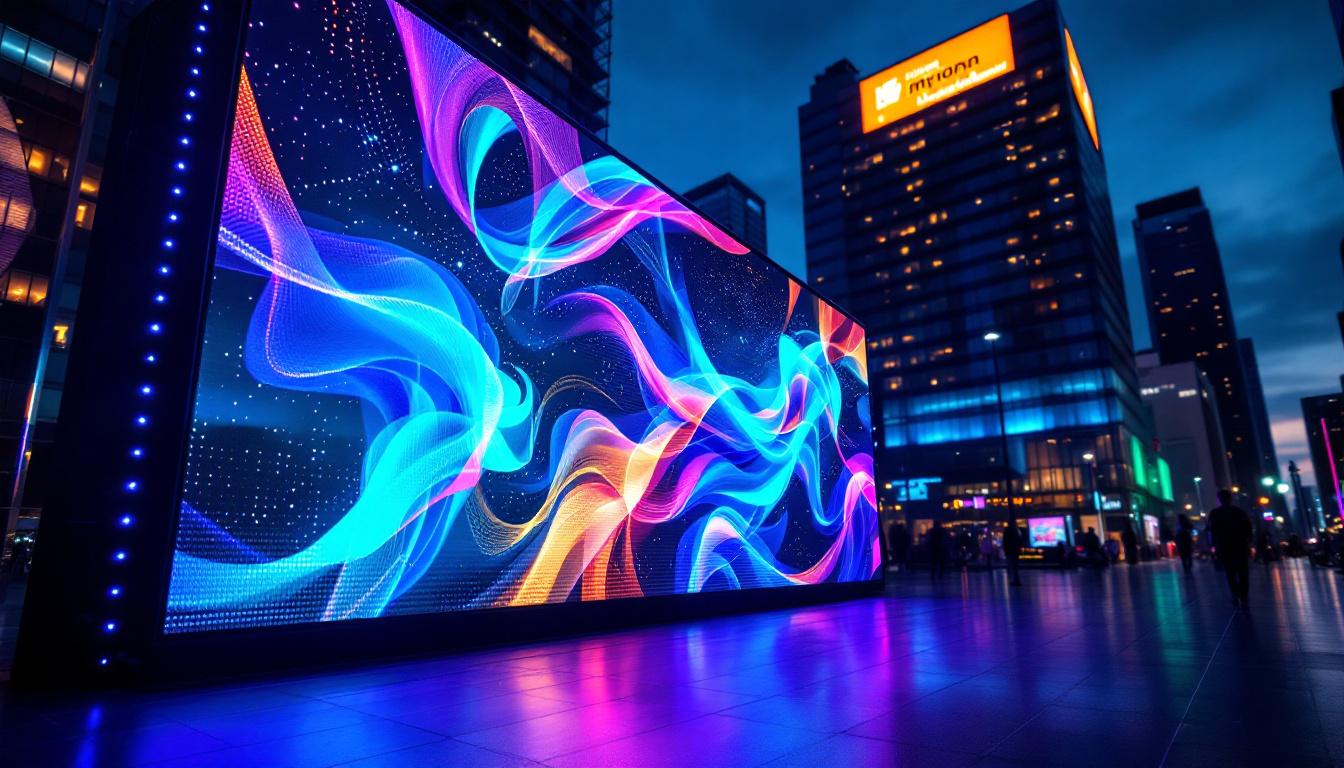In today’s fast-paced digital world, computer monitors have become an essential part of everyday life, whether for work, entertainment, or creative pursuits. Among the various types of displays available, LED monitors have gained significant popularity due to their efficiency, image quality, and compact design. This article delves into the world of small LED computer monitors, explaining what LED displays are, how they work, and why they are an excellent choice for many users.
Understanding LED Technology in Computer Monitors
LED stands for Light Emitting Diode, a semiconductor device that emits light when an electric current passes through it. In the context of computer monitors, LED technology refers to the backlighting method used to illuminate the screen. Unlike older LCD monitors that used cold cathode fluorescent lamps (CCFL) for backlighting, LED monitors employ LEDs, which offer several advantages.
It’s important to clarify that LED monitors are essentially LCD screens that use LED backlighting. The LCD (Liquid Crystal Display) panel itself does not emit light but controls the passage of light to create images. The LED backlight shines through the LCD layer, enabling the display of vibrant and sharp images.
Types of LED Backlighting
There are two primary types of LED backlighting used in monitors: edge-lit and full-array.
- Edge-lit LED: LEDs are placed along the edges of the screen, and light is diffused across the display. This design allows for thinner and lighter monitors, making it popular in small-sized displays.
- Full-array LED: LEDs are distributed evenly behind the entire screen, providing more uniform brightness and better contrast. Some full-array monitors also support local dimming, which enhances black levels and overall picture quality.
Advantages of LED Backlighting Over CCFL
LED backlighting offers several benefits compared to CCFL technology:
- Energy Efficiency: LEDs consume less power, which is especially beneficial for portable and small monitors.
- Thinner Design: LED backlights are more compact, allowing manufacturers to produce slim and lightweight monitors.
- Better Brightness and Contrast: LEDs can achieve higher brightness levels and better contrast ratios, improving image clarity.
- Longer Lifespan: LEDs typically last longer than CCFLs, reducing the need for replacements.
- Environmentally Friendly: LEDs do not contain mercury, unlike CCFLs, making them safer to dispose of.
Why Choose a Small LED Computer Monitor?
Small LED monitors, typically ranging from 15 to 24 inches, offer unique advantages for specific use cases. Understanding these benefits can help users make informed decisions when selecting a monitor.
Space Efficiency and Portability
One of the primary reasons to opt for a small LED monitor is space efficiency. In environments where desk space is limited—such as home offices, dorm rooms, or compact workstations—a smaller monitor can fit comfortably without cluttering the area. Additionally, small LED monitors tend to be lightweight and portable, making them ideal for users who need to move their setup frequently or prefer a minimalist workspace.
Lower Power Consumption
Smaller monitors generally consume less power than their larger counterparts, which can contribute to energy savings over time. For businesses managing multiple workstations or individuals conscious of their electricity usage, this can be a compelling factor. The inherent energy efficiency of LED backlighting further enhances these savings.
Cost-Effectiveness
Small LED monitors are often more affordable than larger models, making them accessible to budget-conscious consumers. Despite their lower price point, many small LED monitors offer excellent resolution and color accuracy, providing good value for money without compromising on quality.
Ideal for Specific Applications
Small LED monitors are particularly suited for certain tasks and environments:
- Point of Sale (POS) Systems: Compact displays are perfect for retail counters where space is at a premium.
- Secondary Displays: Professionals such as programmers, video editors, and designers often use small monitors as secondary screens to increase productivity.
- Embedded Systems: Small LED monitors are used in kiosks, medical devices, and industrial control panels due to their reliability and compact form factor.
Key Features to Consider When Buying a Small LED Monitor
Selecting the right small LED monitor involves evaluating several critical features to ensure it meets your needs. Here are the most important factors to consider:
Resolution and Screen Size
Resolution defines the number of pixels displayed on the screen, directly impacting image sharpness. Common resolutions for small monitors include 1080p (1920×1080) and 720p (1280×720). For screens between 15 and 24 inches, 1080p is generally recommended to ensure crisp visuals. However, for very small monitors (under 17 inches), 720p might suffice depending on the use case.
Screen size is a personal preference but also depends on the intended application. For instance, a 15-inch monitor is compact and portable, while a 22-inch display offers more screen real estate without occupying excessive desk space.
Panel Type
The type of LCD panel used affects color reproduction, viewing angles, and response times. The most common panel types are:
- TN (Twisted Nematic): Offers fast response times, making it suitable for gaming, but has narrower viewing angles and less accurate colors.
- IPS (In-Plane Switching): Provides superior color accuracy and wide viewing angles, ideal for professional work and general use.
- VA (Vertical Alignment): Balances good contrast and color reproduction, often used in multimedia monitors.
Refresh Rate and Response Time
While refresh rate and response time are more critical for gaming monitors, they can also impact general user experience. A higher refresh rate (such as 75Hz or 120Hz) results in smoother motion, which is beneficial for video playback and gaming. Response time, measured in milliseconds, indicates how quickly pixels change color; lower values reduce motion blur.
Connectivity Options
Ensure the monitor supports the necessary input ports such as HDMI, DisplayPort, VGA, or USB-C. Modern small LED monitors often include multiple ports to accommodate various devices, including laptops, desktops, and gaming consoles.
Ergonomics and Adjustability
Even small monitors should offer ergonomic features like tilt adjustment, height adjustment, or swivel capabilities. These features enhance comfort during prolonged use and help reduce strain.
How LED Monitors Impact Visual Quality
Visual quality is a crucial consideration when choosing any monitor. LED technology plays a significant role in delivering vibrant and clear images, but other factors also influence the overall experience.
Brightness and Contrast
LED backlighting enables higher brightness levels compared to CCFL, which is especially beneficial in well-lit environments. A typical small LED monitor offers brightness levels ranging from 250 to 350 nits, sufficient for most indoor settings.
Contrast ratio, the difference between the darkest black and the brightest white, is enhanced by LED technology, particularly in full-array LED monitors with local dimming. This results in deeper blacks and more vivid colors, enhancing the viewing experience.
Color Accuracy and Gamut
Color accuracy is vital for professionals in photography, design, and video production. Many small LED monitors use IPS panels to deliver consistent and accurate colors. Additionally, some models cover a wide color gamut, such as sRGB or AdobeRGB, ensuring that colors appear true to life.
Viewing Angles
Wide viewing angles ensure that the image remains consistent when viewed from different positions. IPS panels typically offer viewing angles of up to 178 degrees horizontally and vertically, making them ideal for collaborative work or multi-user environments.
Common Uses and Applications of Small LED Monitors
Small LED monitors serve a variety of purposes across different sectors. Their versatility and compact size make them suitable for numerous applications.
Home and Office Use
For everyday tasks such as web browsing, document editing, and video conferencing, small LED monitors provide sufficient screen space without overwhelming the workspace. They are often used in home offices or as secondary monitors to extend desktop real estate.
Gaming and Entertainment
While larger monitors are generally preferred for immersive gaming, small LED monitors can be excellent for casual gaming or portable setups. Their fast response times and decent refresh rates cater well to many popular games.
Professional and Creative Work
Graphic designers, video editors, and photographers may use small LED monitors as secondary displays for tool palettes and timelines, allowing the primary monitor to focus on the main content. High color accuracy and IPS panels are particularly valued in these scenarios.
Industrial and Commercial Applications
Small LED monitors are commonly used in point-of-sale terminals, kiosks, medical equipment, and control rooms. Their reliability, compactness, and clear display make them ideal for specialized environments.
Maintaining and Caring for Your Small LED Monitor
Proper maintenance can extend the lifespan and preserve the performance of your LED monitor. Here are some tips to keep in mind:
Regular Cleaning
Dust and fingerprints can degrade image quality. Use a microfiber cloth and appropriate screen cleaner to gently wipe the display. Avoid harsh chemicals that can damage the screen coating.
Optimal Brightness Settings
Running the monitor at maximum brightness continuously can reduce its lifespan. Adjust brightness to comfortable levels based on ambient lighting conditions to balance image quality and longevity.
Avoiding Burn-In and Image Retention
Although LED monitors are less susceptible to burn-in than OLEDs, static images displayed for extended periods can cause image retention. Use screen savers or turn off the monitor when not in use to prevent this issue.
Proper Ventilation
Ensure the monitor has adequate airflow to prevent overheating. Avoid blocking vents and keep the device in a cool, dry place.
Future Trends in LED Monitor Technology
The LED monitor market continues to evolve, driven by advancements in display technology and user demands. Some emerging trends include:
Mini-LED and Micro-LED Displays
Mini-LED technology uses thousands of tiny LEDs for backlighting, offering improved contrast and brightness control. Micro-LED takes this further by using microscopic LEDs as individual pixels, promising superior image quality and energy efficiency. These technologies are gradually making their way into smaller monitors, enhancing performance.
Higher Refresh Rates and Resolution
Small LED monitors are increasingly supporting higher refresh rates (up to 144Hz and beyond) and resolutions (such as 4K), catering to gamers and professionals seeking sharper and smoother visuals.
Integration with USB-C and Thunderbolt
Modern small monitors are adopting USB-C and Thunderbolt ports, enabling single-cable connectivity for video, data, and power. This simplifies setups, especially for laptop users.
Smart Features and Connectivity
Some LED monitors now include built-in smart features like voice assistants, wireless casting, and integrated webcams, transforming them into multifunctional devices suitable for hybrid work environments.
Conclusion
Small LED computer monitors offer a compelling combination of compact design, energy efficiency, and high-quality visuals. Understanding the underlying LED technology, key features, and typical applications helps users select the right monitor for their needs. Whether for professional use, gaming, or everyday computing, small LED monitors continue to be a versatile and practical choice in the evolving landscape of display technology.
Explore Cutting-Edge LED Displays with LumenMatrix
Ready to elevate your visual experience with the latest in LED display technology? LumenMatrix is at the forefront of innovation, offering a wide range of LED display solutions that cater to your every need. From captivating Indoor LED Wall Displays to dynamic Outdoor LED Wall Displays, and from versatile Vehicle LED Displays to sleek LED Poster Displays, our products are designed to make a lasting impression. Discover how LumenMatrix can transform your space and help you communicate with impact. Check out LumenMatrix LED Display Solutions today and step into the future of visual engagement.

